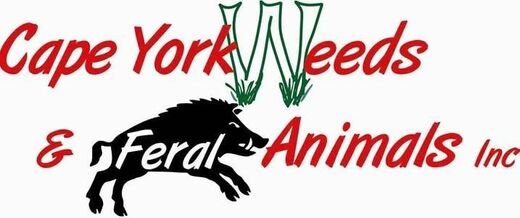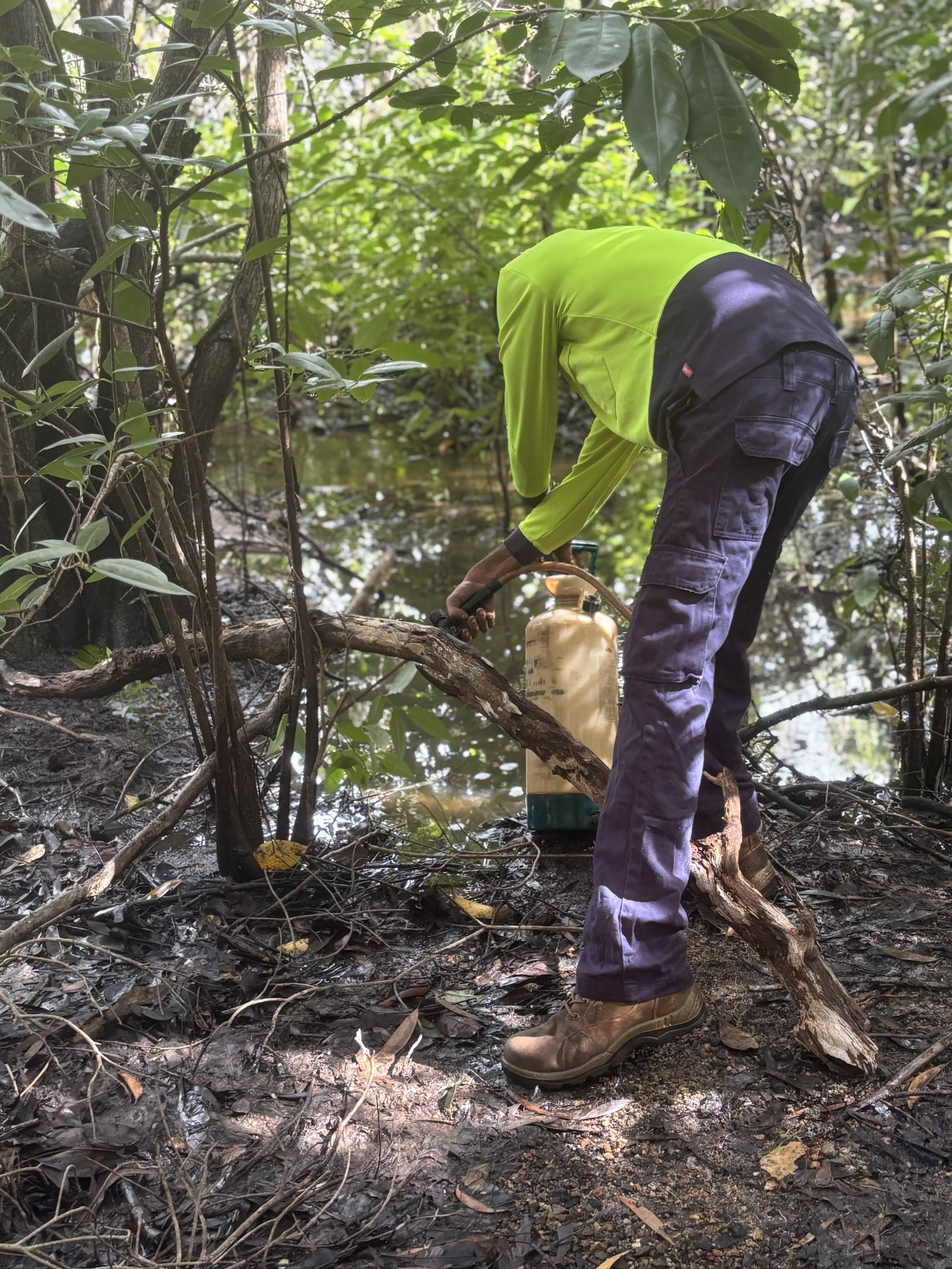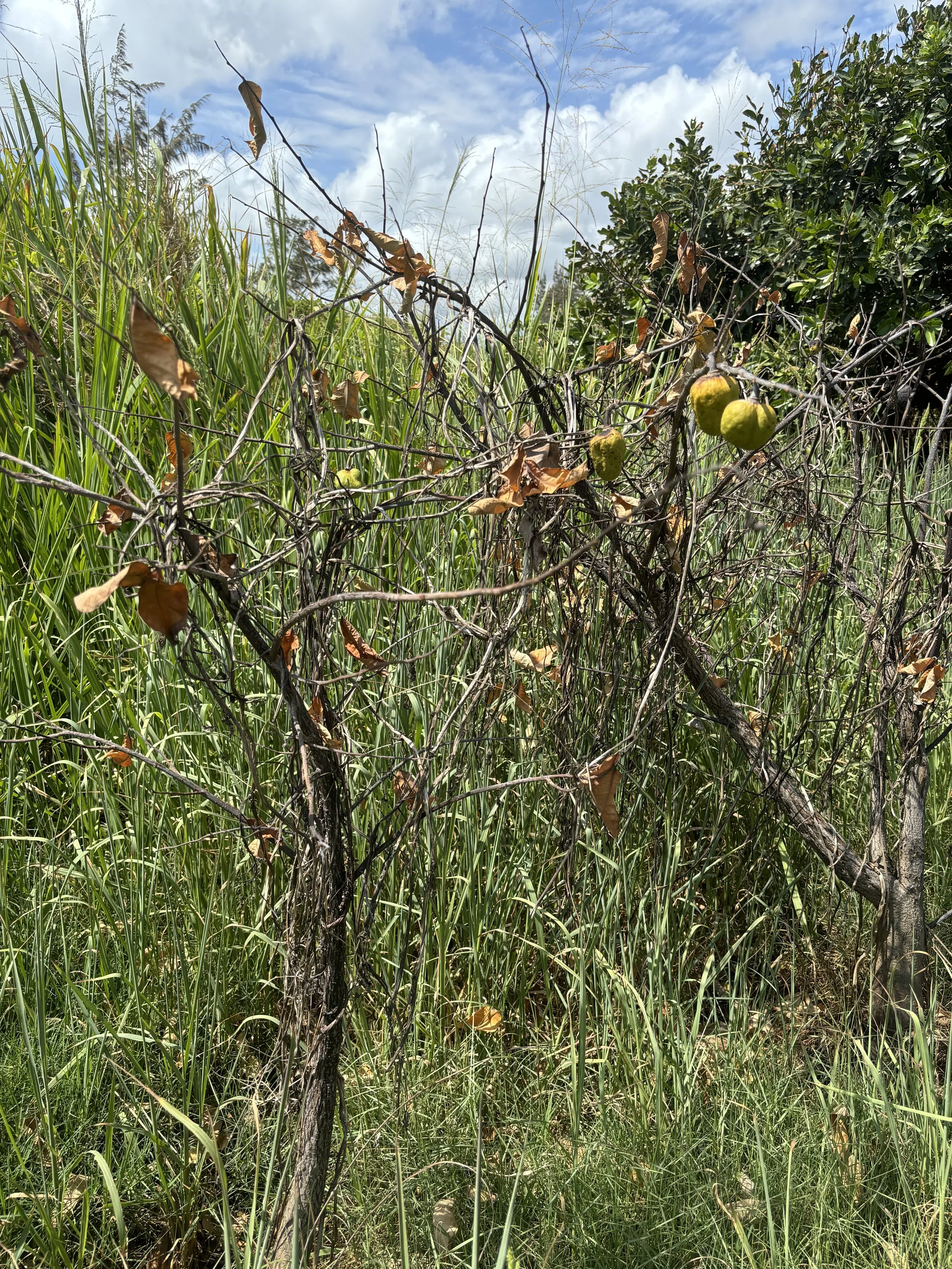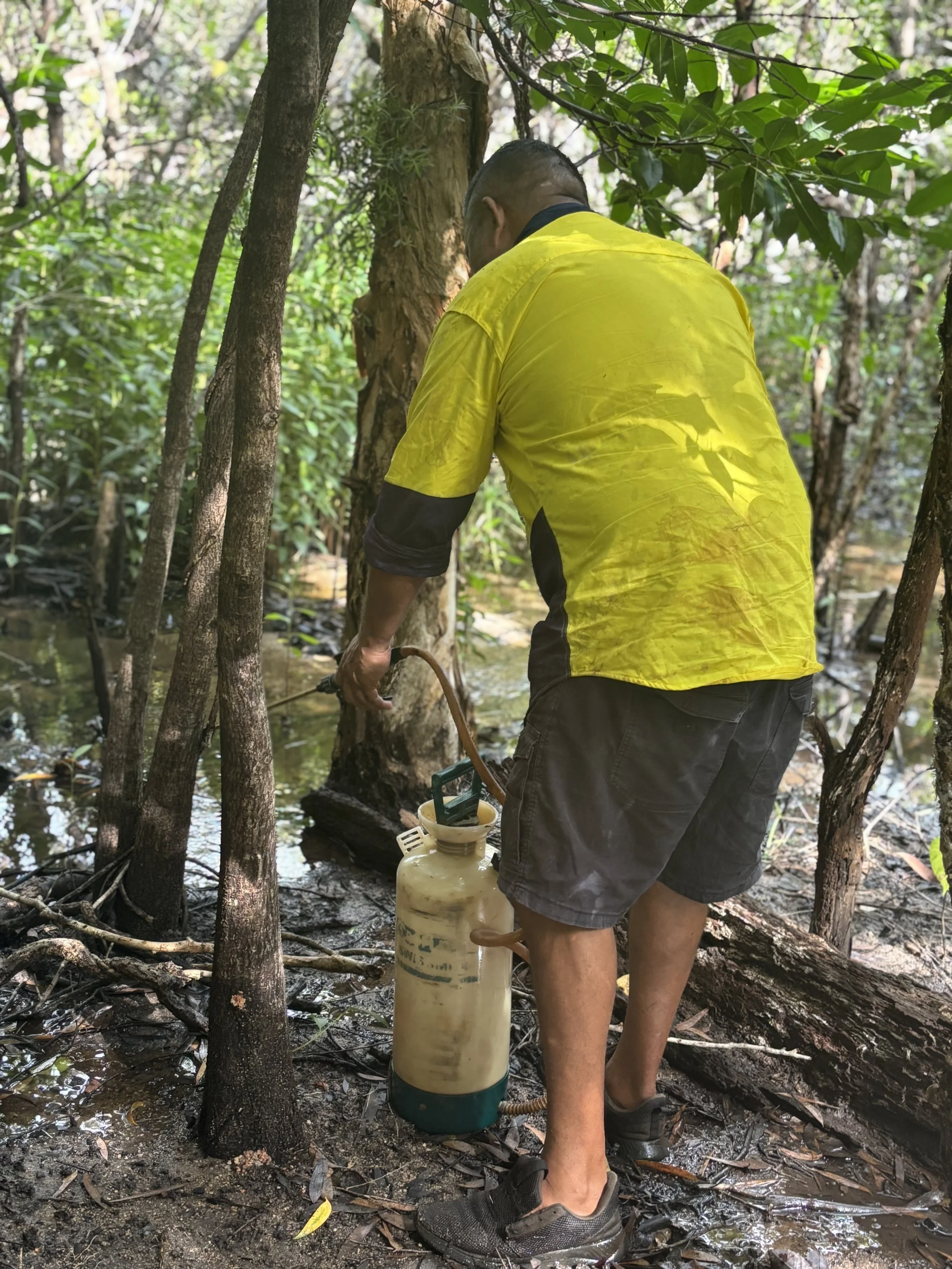APRIL ACTIVITIES
It has been a very busy month for us bama , as everything ,especially our weed growing season. We finished our reef Coastal Restoration Work on Pond Apple. See the below report which details our prject . We have done some tidy up work at Quarantine bay and in Cooktown The Federal Government has been very impressed with what our Bama achieved with very limited resources. We are very grateful to all of our Indigenous staff and our volunteers who made the remarkable Achievement.
We attended the Local marine Advisory Committee meeting and our Reef Restoration and Adaptation Program Meeting in Cairns. See our photo Gallery.
Cape York East Coast Pond Apple Survey and Control Program
All Survey/Control Work Trips- November 2024 to April 2025 – Progress Report-2
We are working in partnership with our Department of Industry, Science and Resources, as a part of our Cape York East Coast Pond Apple Maintenance and Control Project.
In association with Local community members, Jajikal Aboriginal Corporation, KalkaJaka Aboriginal Corporation, South Cape York Catchments, Cook Shire council and the Traditional owners, our community group has kept up maintaining the Pond Apple control work that has been ongoing, from Weary Bay to the Cooktown area for the last thirty-two years.
We also kept up with our community capacity building, with which we have been engaging the Cape York East coast community over many years.
Control work has occurred in all of the project’s South East Coast catchments. We are continually working from the start of all the infestations, with the aim of reducing the size and impact of Pond Apple on the ecosystems of all the internationally recognised coastal wetland areas.
Note: As we have expanded our search and control are out from the initial control sites, we have found some extra Pond Apple trees that we were able to control before any viable seed got into the seedbank in the ground.
It highlights our concern that regular maintenance of these sites needs to be done regularly. Being a prolific seeder and a highly invasive species, Pond Apple has the the ability to re-establish and take over the native ecosystems that have recovered. It will once again take over and out compete all the native species like it has done some thirty-two years ago. This will destroy our native species of Dugong, Turtle, Paper Bark, Mangroves, and our rainforest species that have only just regenerated themselves.
We have expanded on our previous survey and control areas as time and resources have permitted. We do this under the premise that, the more you look the more you find.
As a part of our contract with Department of Industry, Science and Resources, we were able to conduct a survey and control work trip as soon as we could access all areas.
We have employed traditional owners who have undertaken pond apple control work in their Traditional land and Sea country.
The targeted areas were, the areas surrounding Weary Bay Walsh Bay, Amos Bay, Archer's Point, Walker Bay, Cooktown, and Endeavour River, where Pond Apple has been historically invasive.
This project has built upon and added to community work done in the previous thirty years.
We started on our final control run-milestone of our pond apple removal project.
As it has been very wet, we had to stagger our control work to work around the wet reason.
We had control work carried out over thirty people days.
We did this extra work as a big part of our in-kind contributions
An In-kind program was carried out over seventy-six people days, during the above period.
We had three volunteers who contributed their time as in-kind support.
Due to intermittent rain, we were able to access most areas.
The Amos Bay coastal swamp area was too wet, and we could not get to the swamp area safely. Most of this area had Pond Apple in water, and control work method would not work.
We managed to get the outlying pond apple that was on the drier areas.
This has contained the pond apple and has not allowed any spread of seedlings.
Hopefully we will access the swamp later in the year as it dries up, if we have any new maintenance resourcing.
Liaised with Local Land holders, and employed the proper Traditional Owners, to work along all existing Pond Apple areas.
We also surveyed areas to the North, South and West of each coastal Pond Apple area, to see if any new Pond Apple could be found.
We conducted the control work on various days throughout this time as soon as we were able.
A total area 2118 ha surveyed for the Invasive species :- Pond Apple.
As this was follow up control in the same areas, approximately 9 ha of Pond Apple regrowth was resurveyed, and what was there, controlled.
All Pond Apple that was found was basal barked
Each trip we met up at the CYWAFA_INC office where we went through risk assessment, workplace health and safety, and toolbox talks.
Our Traditional Owners met at the start of our work area at Weary Bay, Wujal Wujul.
We did a full survey of the known areas of Pond Apple in Weary Creek and the surrounding freshwater soak areas.
Again, none was found which is a good sign.
Weary Bay- Pond Apple-Survey-Control
· We then moved on to Archer Point with our Traditional owners.
· Met up at Archers Point where we checked likely locations of Pond Apple infestations and found none.
We moved up the coast to Walker Bay and surveyed all the area for any pond apple and found quite a bit of regrowth in areas that had only recently dried up enough for us to access.
All of the existing Pond Apple regrowth area was controlled.
Some had only just started to seed and were controlled before any seed was viable.
Finished up with filling out the herbicide data sheets and mixing ratios for the day.
We were able to conduct control work using basal-bark technique.
· An Access and Diesel mix was used.
Photos were taken at photo points and of the general sites.
Met up at the beginning of the Pond Apple infestation behind the sand dunes and finished off the follow-up control work through to the Annan River mouth.
We surveyed the whole Walker Bay area to find only a few seedlings and a couple of small immature trees. These were treated and mapped.
Walker Bay-Pond Apple Regrowth-After-Control
We then went on to Waymburr creek where we conducted Pond Apple control.
In the following morning, we walked into Finch Bay and conducted Pond Apple control by basal barking and hand pulling.
Little or none was found outside of the existing areas that were surveyed.
Photos were taken including photo points along the various treatment sites.
All areas of control work have been mapped using the GIS systems and put on to QGIS maps.
The data and herbicide usage sheets were also completed.
The Pond Apple Control Program was extremely successful considering it was extremely wet.
This is the final control program run for the project that has been carried out,
If further resources are allocated, we will continue with our Pond Apple Project regularly throughout next year and beyond.
As the grant is quite small our ability to keep following up regularly is severely limited.
Input Pond Apple control costs uch as diesel and basal barking herbicide has risen substantially
Liaised with Local Land holders along all Pond Apple areas.
We identified and eradicated Pond Apple seedlings sprouting from debris washed in by the tide, along our coastal areas.
We carried out extra work on was the Waymburr infestation in Alligator Creek.
The creek itself was still reasonably wet, having had plenty of rain, and had only just started to dry out.
As a result, not a great deal of control work could be undertaken.
We basal barked any pond apple that was out of the water.
Waymburr-Racecourse Creek- Control Site Infestation-After Control
· Mapped all of control work.
· The data and herbicide usage sheets were also completed.
A lot of extra freshwater creek area was surveyed to make sure we did not find any surprise infestation further up our freshwater creek areas.
Little or none was found outside of the existing areas that were surveyed.
Photos were taken including photo points along the various treatment sites and uploaded to our data base.
All areas of control work have been mapped using the GIS systems and put on to QGIS maps.
Mapping data was also added to our data base as well.
The data and herbicide usage sheets were also completed.
More extensive mapping will be undertaken as a part of the next control program when resources become available.
Hopefully, the community will keep controlling any that they see in their travels.
The Weeds Control Program was extremely successful, due to the fact that a smaller number of regrowth seedlings and trees are being controlled each time.
CYWAFA_INC, the Cape York community, and Traditional Owners, are to be commended for their professionalism and willingness to get the job done.










